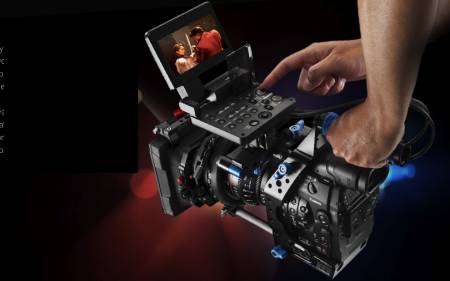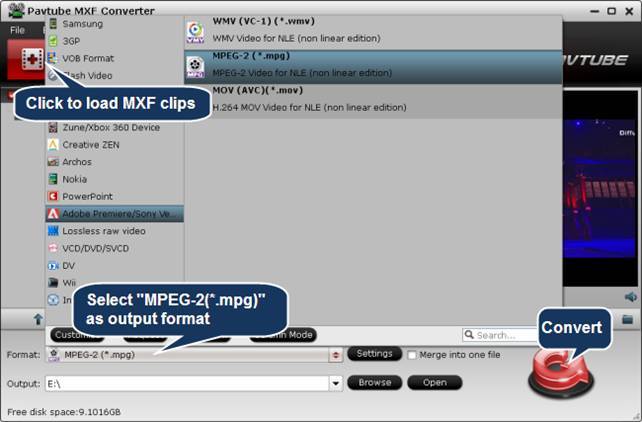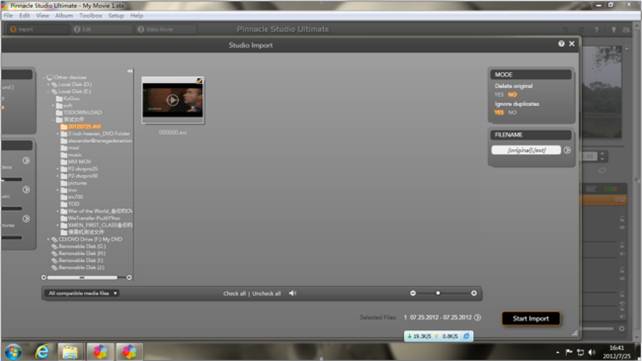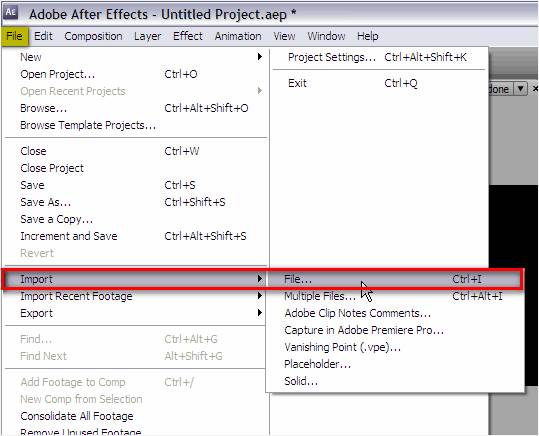The Canon EOS C300 camcorder represents a giant leap forward for cinematic HD video production. To devise the EOS C300, Canon leveraged and developed cutting-edge technology from several of its areas of expertise: sensors, image processors, professional video cameras - and of course, optics. According to Canon, whether you’re pulling rough cuts for dailies, color grading, compositing or chroma keying, the EOS C300 can smoothly and efficiently drop right into your existing workflows to ensure a project’s success. However, the C300 records footage in MXF file format, some NLE applications are lacking of native support to MXF clips, and some NLE plug-ins e.g. Final Cut Pro X, are still under development. If you failed to import Canon C300 MXF footage to video editing software for post-production, you are recommended transcoding Canon MXF videos to your editing app preferred format before importing. In this article, we show you how to compress/import Canon C300 MXF to Sony Vegas, Pinnacle Studio and Adobe After Effects one after another.

Software requirement
Pavtube MXF Converter
![]() Transcode Canon C300 MXF to Sony Vegas
Transcode Canon C300 MXF to Sony Vegas
User problem - “Sony Vegas Pro 9e isn't seeing MXF files on my system (it's the first time I've tried to handle them). Even if I bring an instance of windows explorer up and drag the file to the timeline, I get the "+" added to my cursor, as if it's gonna take, but then I get and error message ‘None of the files dropped on Vegas Pro could be opened.’ Any ideas on why this is happening? I'm on XP64 if that makes any difference.”
Solution - convert Canon C300 MXF to MPEG-2 MPG for using in Sony Vegas

Basic steps on recoding C300 MXF files to MPG for Sony Vegas:
1. Start up Pavtube MXF Converter as MXF to MPEG2 Converter for Vegas. Click “Add video” button to load MXF clips captured by Canon EOS C300 camera.
2. Choose “MPEG-2 (*.mpg)” as output format from “Adobe Premiere/Sony Vegas” profile list.
3. Click “Convert” button to start Canon C300 MXF to Sony Vegas Conversion. When the conversion is done, click “Open” button to get the generated MPEG-2 .mpg files for editing in Vegas.
Afterwards, follow File > Import > Media… to browse and load the transcoded Canon C300 MXF footage to Sony Vegas for extending editing.

![]() Convert Canon C300 MXF clips to HD AVI for Pinnacle Studio importing
Convert Canon C300 MXF clips to HD AVI for Pinnacle Studio importing
User problem – “Our Canon C300 stores footage in MXF format. We failed to import them to Pinnacle. We imported from the original file structure download from our camera, but the Pinnacle said ‘No items in the folder’.”
Solution – transcode Canon MXF to HD AVI for Pinnacle Studio
Basic steps on converting C300 MXF clips to HD AVI for Pinnacle Studio:
1. Run Pavtube MXF Converter as MXF to AVI Converter. Click “Add Video” or “Add from folder” icon to load Canon MXF material.
2. Choose “AVI HD Video (*.avi)” as target format from “HD Video” option.
3. Click “Settings” button and enter “Profile Settings” panel to adjust video and audio settings if necessary. Users are free to reset codec, bit rate, frame rate, sample rate, and audio channels.
4. Click the big button “Convert” to start MXF to AVI conversion for Pinnacle Studio. Once finished, click “Open” button to get the final output HD AVI files for Pinnacle Studio.
After that, launch Pinnacle Studio (we run Pinnacle Studio HD Ultimate v15 for example), and follow “Import” > “IMPORT FROM” > “Other devices” > “the folder stored the converted AVI files” > “Start Import”.

![]() Rewrap C300 MXF to MPG for After Effects
Rewrap C300 MXF to MPG for After Effects
This comes with the same procedure as transcoding Canon C300 MXF to Sony Vegas.
1. First off, run Pavtube MXF Converter as MXF to MPG Converter for After Effects. Click “Add video” button to load MXF clips captured by Canon EOS C300 camera.
2. Choose “MPEG-2 (*.mpg)” as output format from “Adobe Premiere/Sony Vegas” profile list.
3. Click “Convert” button to start Canon C300 MXF to Adobe After Effects Conversion. When the conversion finished, click “Open” button to get the generated MPEG-2 .mpg files for using with Adobe After Effects.
Import the generated MPG files to After Effects:

From the main menu, select File > Import > File. This opens the import dialogue box and allows you to select one or more files from a particular folder. To select multiple files, click while holding down the Shift key for contiguous files or the Ctrl/Cmd key for non-contiguous (separated) files.
Select File > Import > Multiple Files to import multiple files located in different folders. The standard dialogue box appears, but after you click Open the box remains and you can navigate to another folder to select more files. Keep doing this until all files are selected, then click Done.
Useful Tips
- How to burn Final Cut Pro projects to DVD on Mac?
- DVD to Final Cut - How to rip DVD to edit in FCP, FCP X, FCE on Mac?
- How to import video files or projects to iMovie 8/9/11 on Mac?
- Enable Final Cut Pro 6/7 and FCP X to work with NEX-6 50p/60p MTS clips
- Transcode AVCHD/MTS/MXF/MOV to Sony Vegas Movie Studio HD 11 friendly format
- Canon C500 MXF Footage and Final Cut Pro (X) workflow - C500 MXF transcoding to ProRes 422

 Home
Home Free Trial MXF Converter
Free Trial MXF Converter





